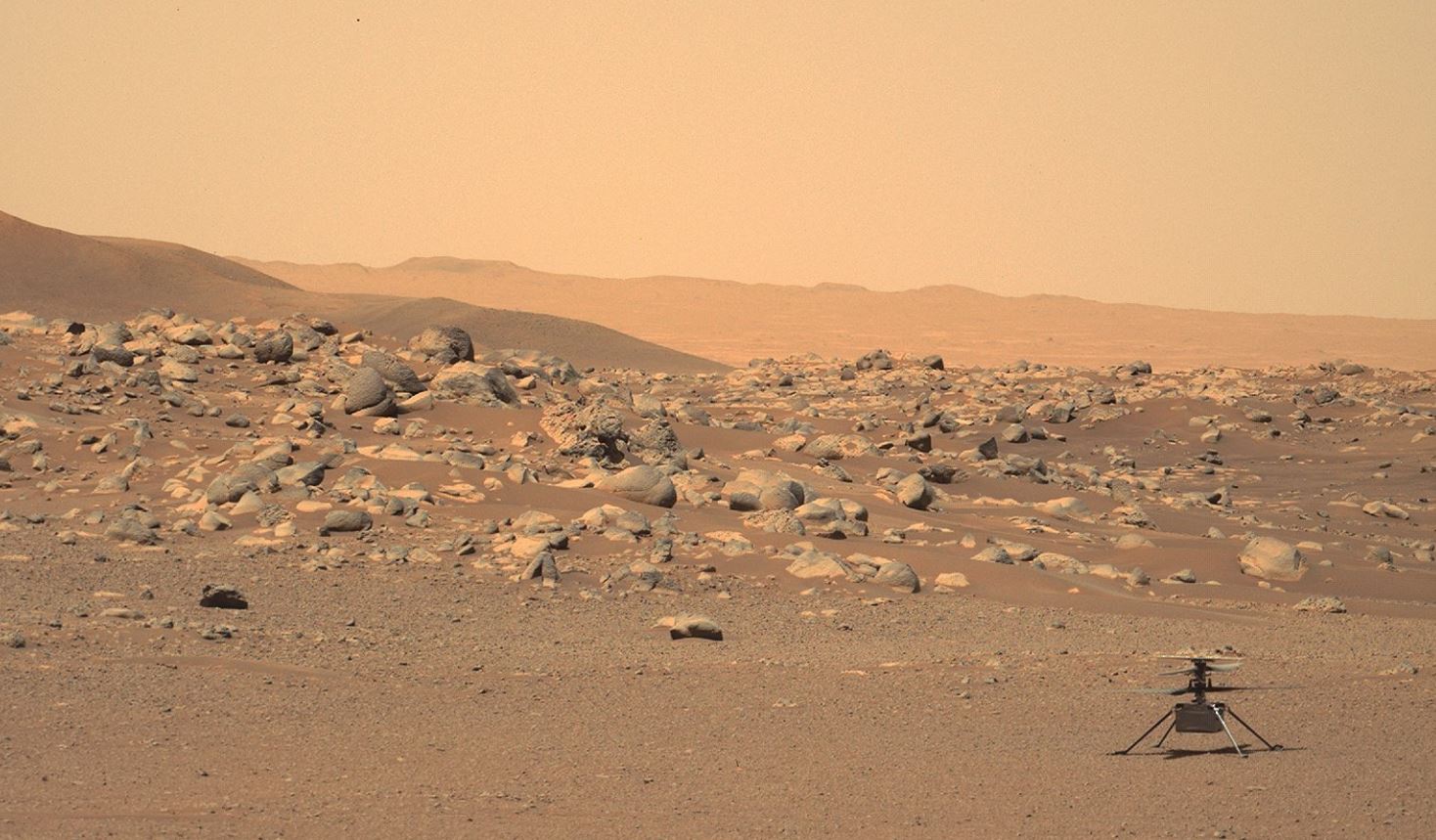December 17 is an historic day for flying machines, so it wouldn’t be surprising if we hear the Ingenuity Mars Helicopter makes an attempt at its 18th flight sometime today. In case you need a little reminder, on this day in 1903, the Wright Brothers had their first successful flight, flying their plane for exactly 120 feet over 12 seconds.
Ingenuity’s most recent flight came on December 5, 2021, its 17th. The fact that Ingenuity has this many flights under its wings, er… rotors…. is nothing short of amazing. The tiny helicopter was only designed for five flights on the Red Planet but now, with 17 successful liftoffs and landings, it has accumulated over 30 minutes of flying time on Mars.
Ingenuity’s 17th flight lasted for 117 seconds and NASA said the “sortie brought history’s first aircraft to operate from the surface of another world closer to its original airfield, ‘Wright Brothers Field,’ where it will await the arrival of the agency’s Perseverance Mars rover, currently exploring “South Séítah” region of Mars’ Jezero Crater.”
Yes, there are a lot of parallels with the Wright brothers’ feats and Ingenuity’s. Former Ingenuity team lead Mimi Aung said in an interview on KCRW radio that both teams took the idea of flight from a concept, question of feasibility, all the way to truly doing it.
“The Wright brothers have been a role model for our team,” said Aung. “They took flying humans on a plane from a question of feasibility. We received the same questions, right? Can you really make it happen because there is so little atmosphere at Mars?”
The answer has been a resounding yes. The trailblazing rotocraft has traveled over the surface a distance of 2.2 miles (3,592 meters), flying as high as 40 feet (12 meters) and as fast as 10 mph (5 meters per second).

But Flight 17 wasn’t without some nail-biting moments. The team back on Earth didn’t know if Ingenuity had landed safely because of an unexpected cutoff to the in-flight data stream as the helicopter descended toward the surface. The Perseverance rover serves as the helicopter’s communications base station with controllers on Earth, and communication link between the two was temporarily severed.
“The interruption in data communications between the Ingenuity helicopter and the base station on the Perseverance rover during Flight 17 occurred when the signal was blocked by elevated terrain between the two as Ingenuity descended at the end of the flight,” said Teddy Tzanetos, Ingenuity Team Lead at JPL, in a status update. “Effectively, Ingenuity ‘flew behind a hill’ or out of the rover’s line of sight, briefly interrupting high-speed communications between the two spacecraft.”

But data downlinked to mission engineers at the Jet Propulsion Laboratory on December 10, indicated that Flight 17 was a success and that Ingenuity is in excellent condition.
The tiny 4-pound (1.8-kilogram) rotorcraft first flew on April 19, 2021, with a short up-and-down hop to prove powered, controlled flight on Mars was possible.
“Few thought we would make it to flight one, fewer still to five. And no one thought we would make it this far,” said Tzanetos. “On the way to accumulating over a half-hour aloft Ingenuity has survived eight months of bitter cold, and operated out of nine unique Martian airfields. The aircraft’s continued operations speaks to the robustness the design and the diligence and passion of our small operations team.”
The plan for Flight 18 is to cover another 754 feet (230 meters) at a speed of 5.6 mph (2.5 meters per second) over 125 seconds. The team expects this flight will also push the limits of Ingenuity’s radio range and performance. To provide it with the best chance of maintaining a link throughout landing, the Mars Helicopter team has modified the flight sequence to communicate in a low-data-rate mode, which will provide an additional signal-strength boost to the radio link.
“If we do lose radio link on landing, it may be several days or weeks until the line-of-sight between Ingenuity and Perseverance improves enough to attempt a communication session,” said Tzanetos. “While delaying our post-flight data analysis is an inconvenience, it is not unexpected and becoming the new normal as we continue to operate in challenging terrain in the weeks ahead.”
As the Wright brothers exemplified, it’s all about pushing the boundaries on the high frontier.

